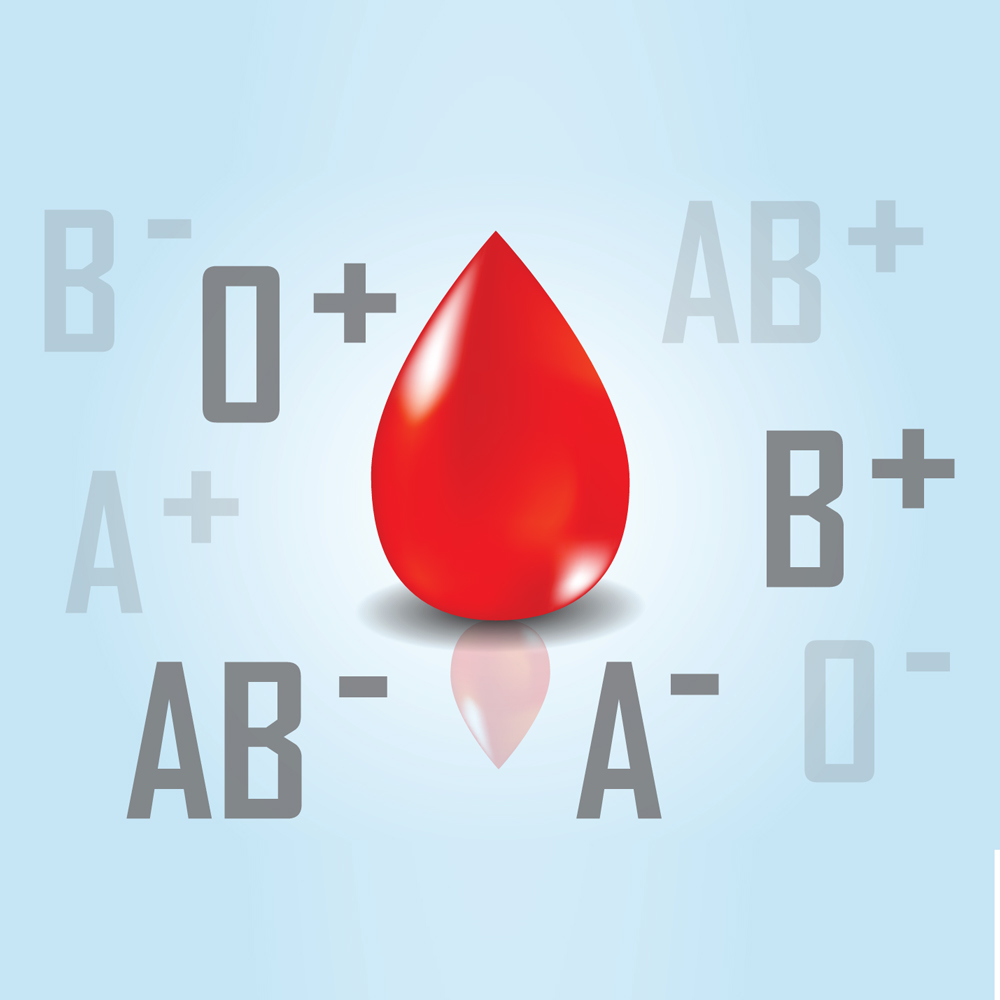Introduction to Blood Types

Carolina LabSheets™
In this lab, students are introduced to the human ABO blood groups. The activity is designed for use with our Carolina® Synthetic Blood, but it may also be performed using our aseptic blood cells.
Needed Materials
Synthetic D (Rh) Antisera (700172)
Synthetic Blood Type A– (700183)
Synthetic Blood Type B– (700179)
Synthetic Blood Type AB+ (700178)
Synthetic Blood Type O+ (700176)
Carolina® Dispos-A-Slide Blood-Typing Slides (700572)
Synthetic Antiserum and Synthetic Blood are sold by the milliliter. A milliliter provides approximately 20 drops. Each blood test (for A, B, and Rh) requires 3 drops of blood, so 5 mL of a given blood sample is enough for about 30 tests. Each blood test requires 1 drop of each antiserum, so about 1.5 mL of each antiserum is needed for 30 tests. When stored at room temperature and away from sunlight, Synthetic Blood Types and Antisera have a shelf life of over 2 years.
Optional Materials
To do this activity with aseptic blood cells, substitute Aseptic Bulk Blood Cells Set (700168) and ABO/Rh Antisera Set (700224) or Blood Cells/Antisera Set (700150) for the synthetic antisera and synthetic blood types listed above. Do not mix the two—synthetic antisera will not work with actual blood cells. The aseptic blood cells and antisera provided in the 700150 set are shipped in their own dropper bottles, so dropping bottles are not needed when using the Blood Cells/Antisera Set. Aseptic blood cells and antisera should be refrigerated on arrival and are best used within 21 days of receipt. Blood cells tend to settle. Gently agitate the containers before each use.
Safety
Ensure that students understand and adhere to safe laboratory practices when performing any activity in the classroom or lab. Demonstrate the protocol for correctly using the instruments and materials necessary to complete the activities, and emphasize the importance of proper usage. Use personal protective equipment such as safety glasses or goggles, gloves, and aprons when appropriate. Model proper laboratory safety practices for your students and require them to adhere to all laboratory safety rules. Our Synthetic Blood and Synthetic Antisera contain nothing of biological origin and are easily and safely discarded because they pose no health hazard. If using aseptic blood cells and antisera, remember that these are of biological origin and should be disposed of accordingly
Procedures
Have students work individually or in pairs.
Clearly label each dropping bottle before dispensing the antisera and blood samples into them. Label the dropping bottles with numbers so that the students do not know the blood types:
1 = blood type A– 3 = blood type AB+
2 = blood type B– 4 = blood type O+
Set up workstations for optimal efficiency with the materials you are using. One method is to set up a station for each blood sample and an additional station for the antisera.
Optional: You may use synthetic blood types other than the ones recommended above. You may also create your own scenario for blood typing, e.g., a crime investigation or medical emergency.
Answer Key to Questions Asked on the Student LabSheet
|
Sample 1 |
Sample 2 |
Sample 3 |
Sample 4 |
Anti-A |
Yes |
No |
Yes |
No |
Anti-B |
No |
Yes |
Yes |
No |
Anti-D (Rh) + or – |
No |
No |
Yes |
Yes |
Blood Type |
A- |
B- |
AB+ |
O+ |
Mike is blood type A. When a lab technician mixes a sample of Mike’s blood with serum taken from Ken’s blood, Mike’s blood cells agglutinate. When Mike’s blood is mixed with serum from Kim’s blood, there is no agglutination. What is the most likely explanation of this?
Ken’s blood serum contains anti-A, and Kim’s does not.
Assuming that this pattern applies to all the ABO blood groups, fill in the following chart.
The ABO Blood Groups
Sample 1 |
Sample 2 |
Sample 3 |
Sample 4 |
Yes |
No |
Yes |
No |
No |
Yes |
Yes |
No |
No |
No |
Yes |
Yes |
A- |
B- |
AB+ |
O+ |
Rh is another human blood group. People are classified as Rh+ or Rh– depending on whether their blood cells agglutinate when mixed with anti-D (anti-Rh). Because both ABO and Rh have medical significance, both are used in designating a person’s blood type; e.g., A+, A–. About 14% of the U.S. population is Rh–. People with Rh– blood type usually do not have Rh antibody in their blood serum unless there has been a previous exposure to the Rh antigen. What are some ways that such an exposure might take place?
By having a blood transfusion of Rh+ blood, or, in the case of an Rh– woman, by a previous pregnancy with an Rh+ fetus.







